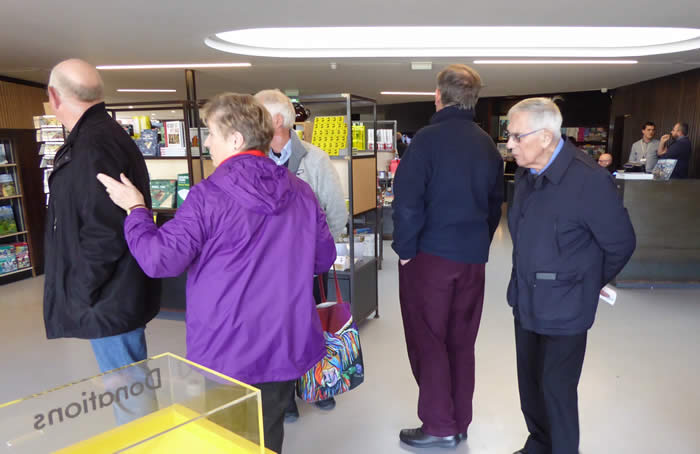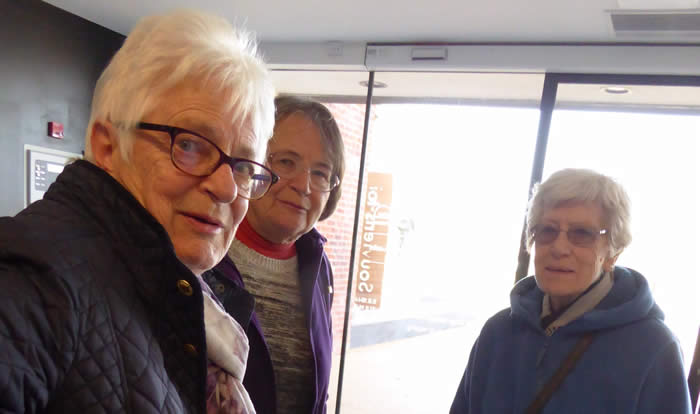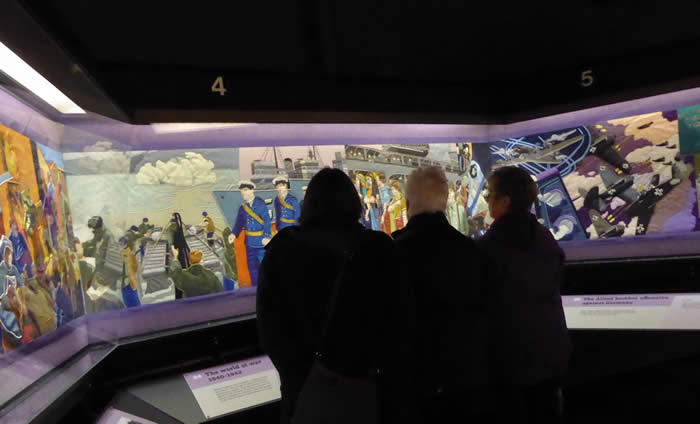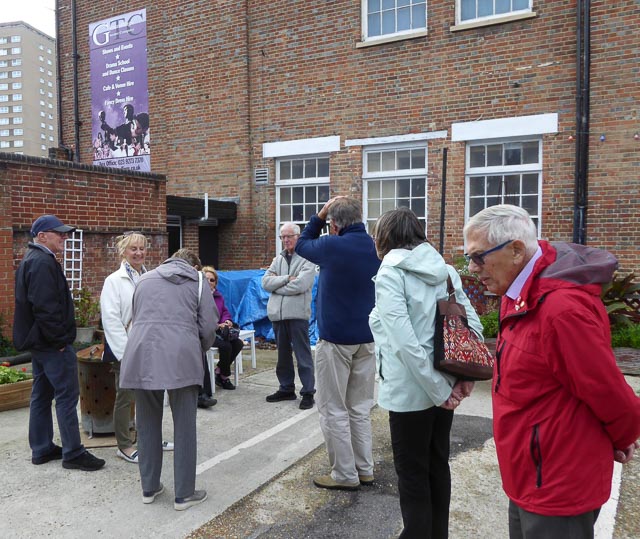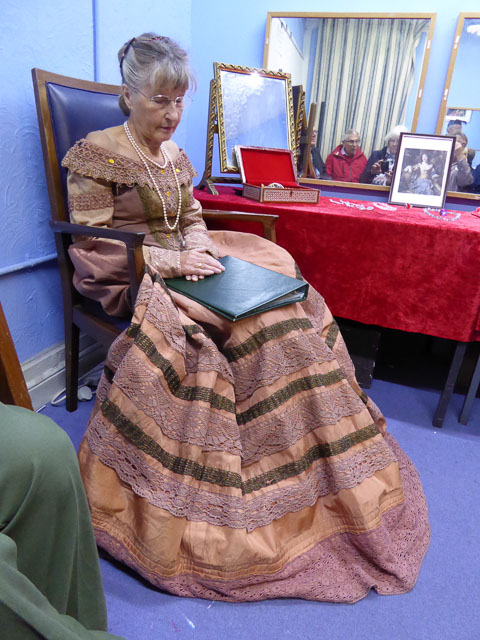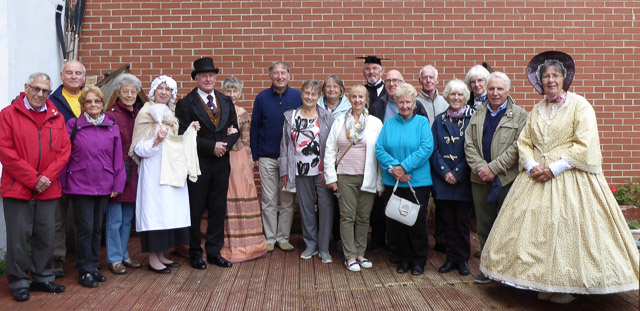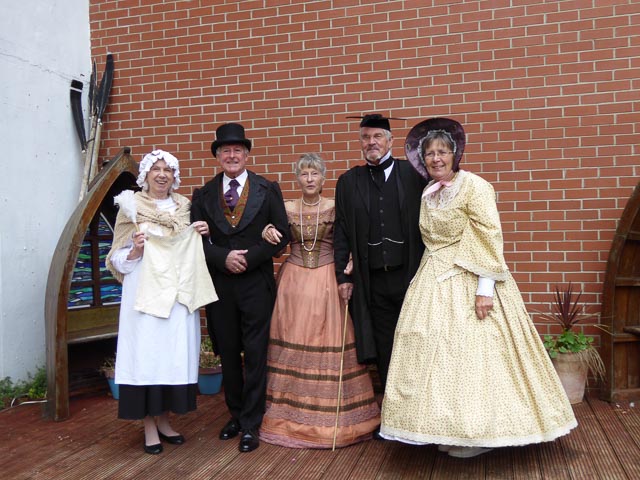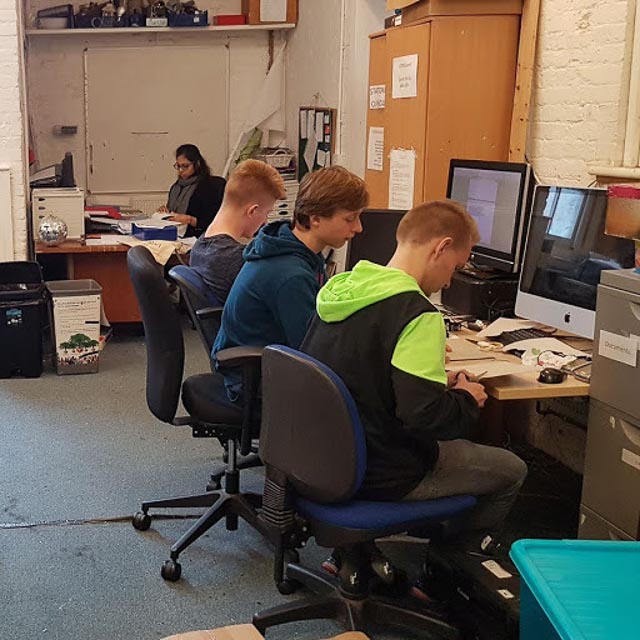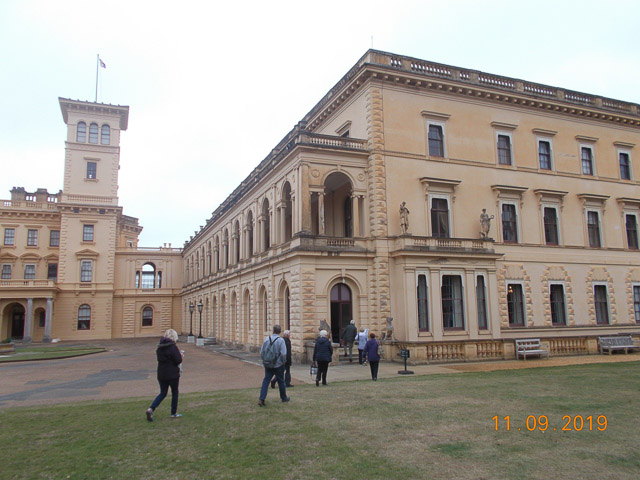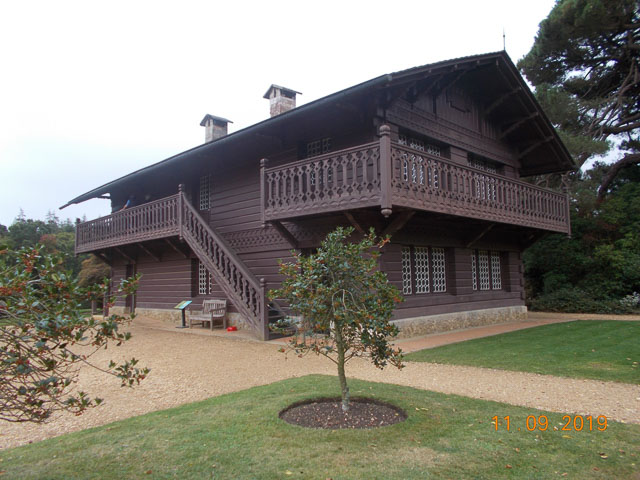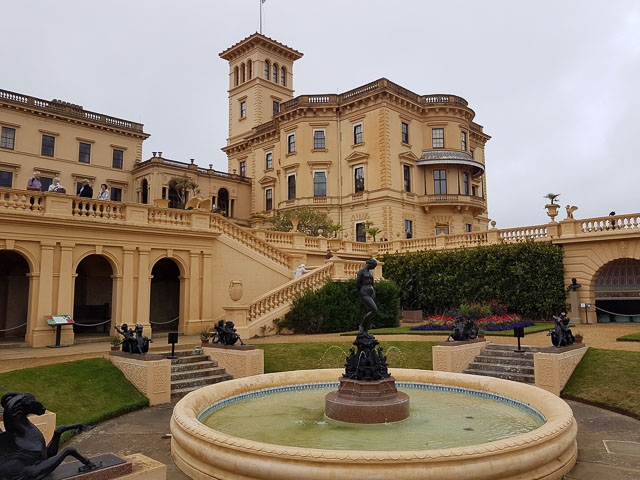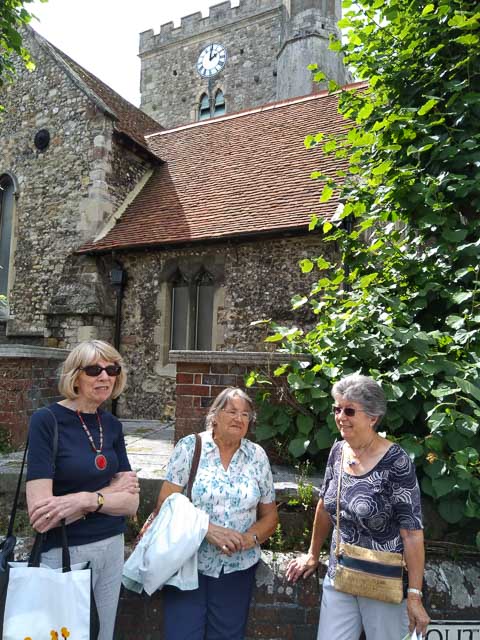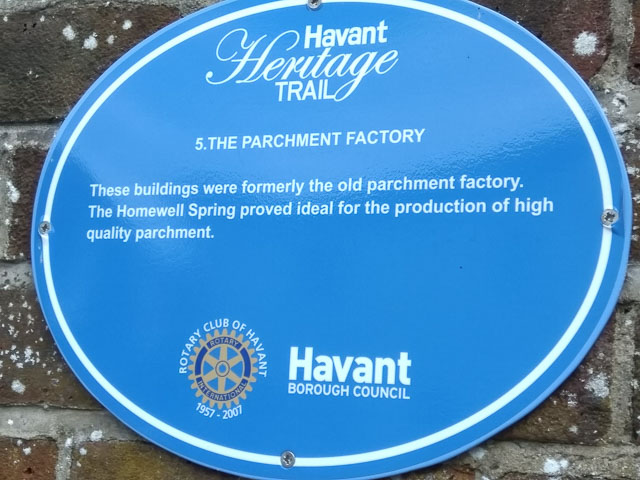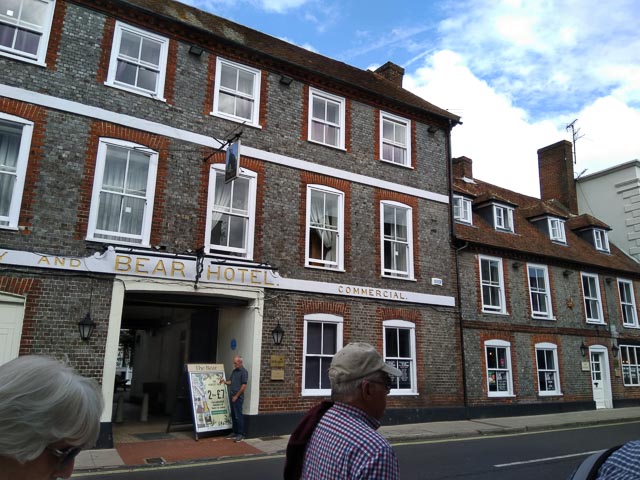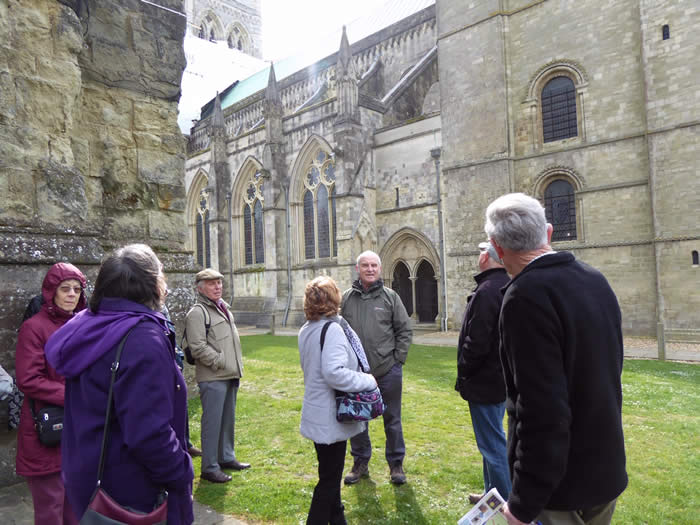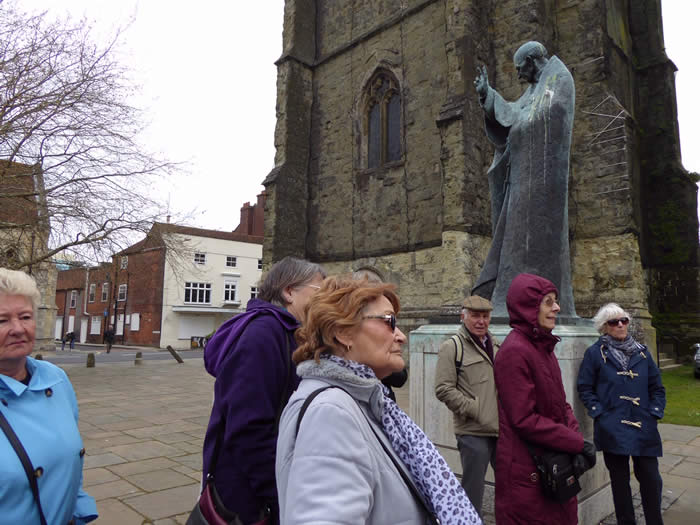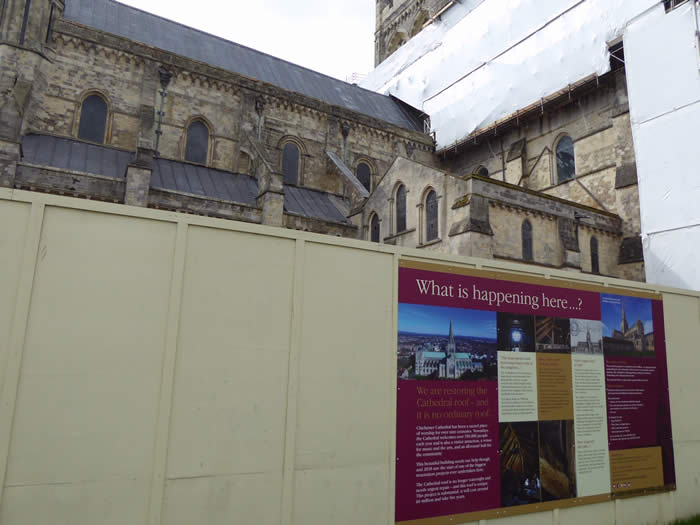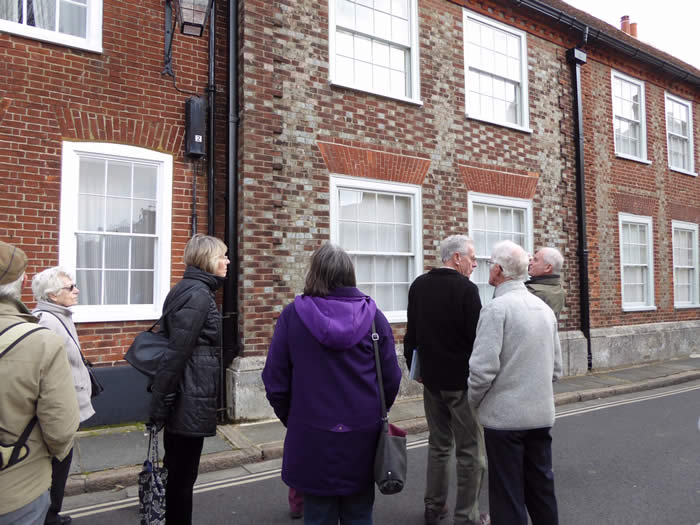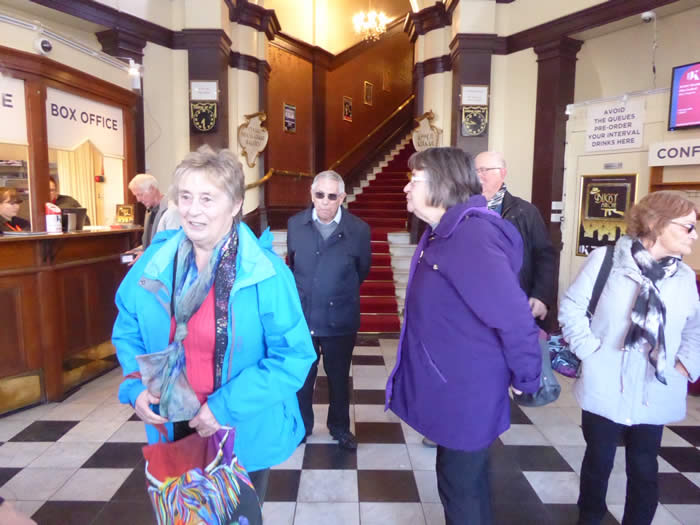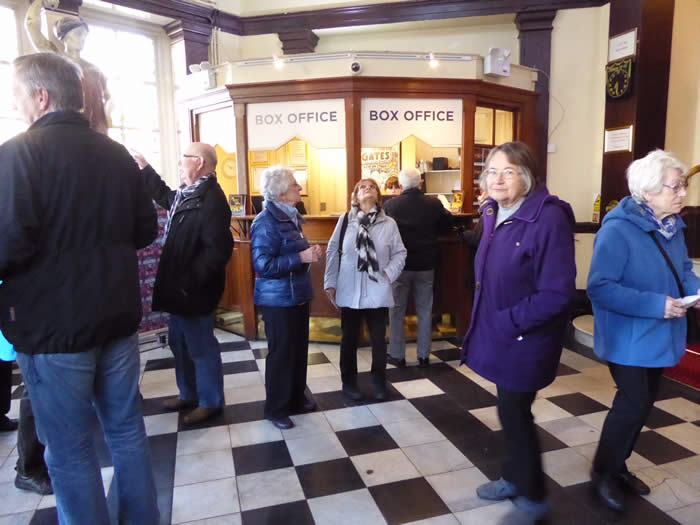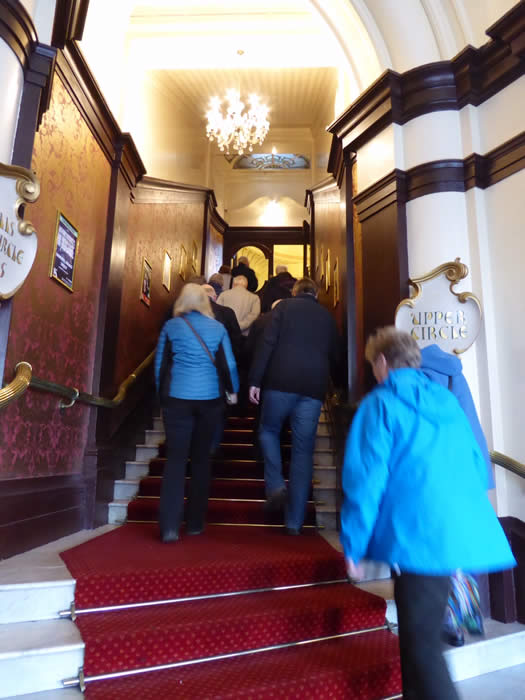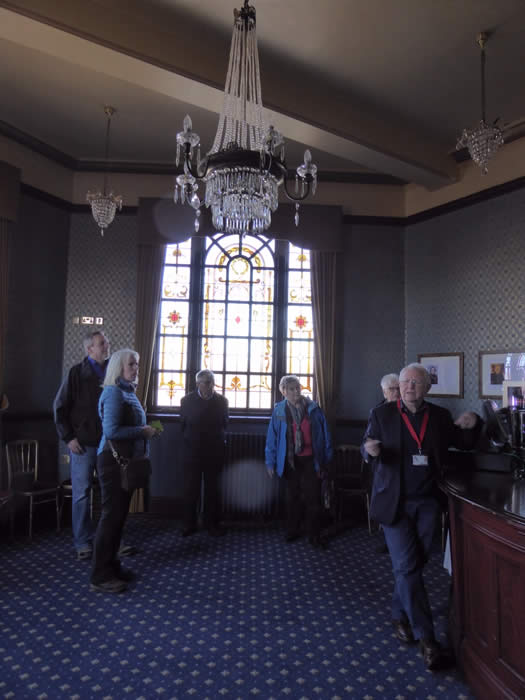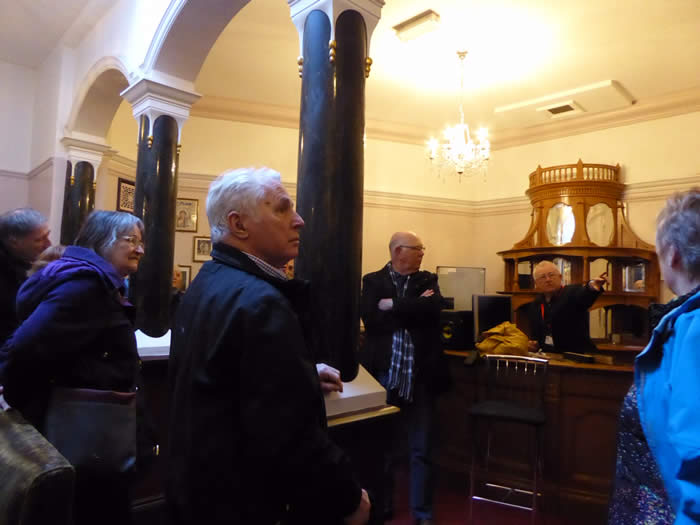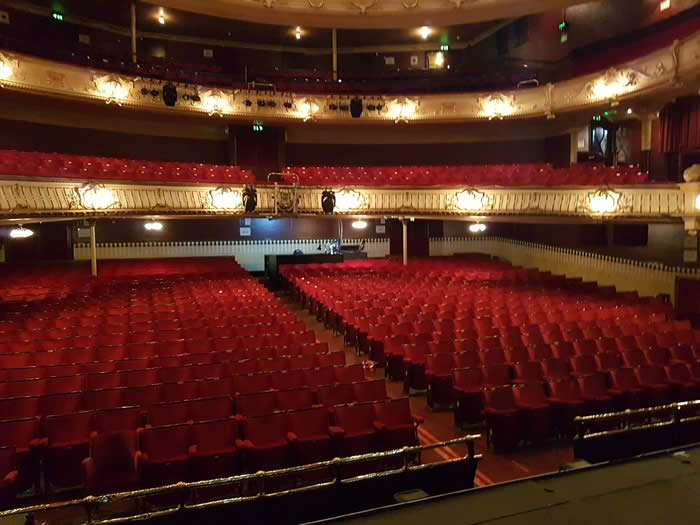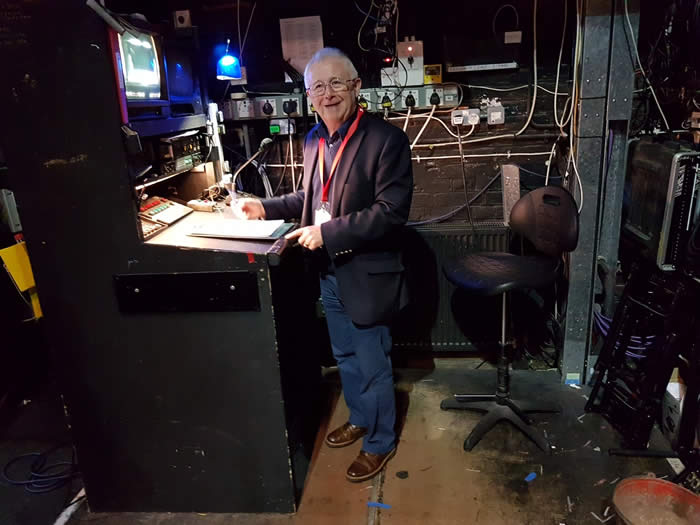Local History 1 Photos 2019
Oct 8th 2019
Groundlings Theatre in Portsmouth
Our group assembled outside the Victorian building in Portsmouth that is now called the Groundlings Theatre. Built in 1784 the building started life as a Beneficiary School, the first free school in Portsmouth, to give a hundred poor boys a basic education and set them up for finding work later. The downstairs was used as a school, and the upstairs was used by the Beneficiary Society for meetings, theatre and concerts. It later provided schooling for girls as well, including the grandmother of one of our members.
We were given a very warm welcome by members of the theatre, who took on the roles of housemaid, lady of the night, headmaster, Henry Ayers (former pupil who emigrated to Australia and became a wealthy and influential person there), Elizabeth Dickens (mother of Charles Dickens), and Margaret Hughes ( first female actress). Groundlings still has a lot of the original features, including floorboards and huge fireplaces.
The building became a theatre in 2010 and is available for professional and amateur performers, as well as providing a wedding or party venue.The theatre has a versatile stage, which can be placed in the round or more traditional shaped stage.
We were taken in to the vast wardrobe space which houses over 11,000 costumes, props and sets. The costumes are available for hire. The hub of the working side of the theatre was buzzing with activity, without which performances would not be possible. We learnt that the theatre had recently been broken into, and the computers had been vandalised. Thanks to the volunteers the mess had been cleaned up and our visit was able to go ahead. The theatre depends on donations in order to survive.
Many thanks to Alison for organising this trip. It was a thoroughly interesting and entertaining afternoon.
Sept 11th 2019
Osborne House
This month’s trip was to Osborne House on the Isle of Wight.
Aug 14th 2019
Guided Walking Tour of Havant
This month’s trip was to Havant, for a walking tour organised and led by Rich Edwards. We had had to postpone this trip due to bad weather, so it was encouraging to see so many people, including some new members. The walking tour is designed to be used with the blue plaques located around Havant, and a leaflet is available to pick out the important features.
Our tour started at the crossroads in the town centre, near to St Faith’s Church, where Rich began by telling us about the origins of the settlement.
Havant became a market town because it was situated at the meeting of two main routes, Rowlands Castle to Langston, and Chichester to Cosham. The Spring located at Homewell has made an important contribution to the town’s growth, providing the resource most needed for brewing, malting, parchment making and tanning. We discovered that the Romans had a building underneath the foundations of St Faith’s Church, and a well at Homewell. Since that time the town has seen many changes. In 1451 Henry VI granted the right to hold an annual fair in October, which lasted until the 19th century.
A fire in 1761 destroyed much of the central area of Havant and this resulted in the surfacing of the road from Cosham to Chichester, which much improved things and the town started benefiting from a considerable increase in traffic, hence the coaching points at The Bear in East Street and The Dolphin in West Street. Havant railway station was the result of the meeting of two railway routes, which means that local residents have the opportunity to travel both to London and along the south coast. We saw a range of buildings dating from Tudor times, Victorian and Edwardian times, through to very modern buildings. We saw the Royal cypher of Edward VIII, above the door to the Post Office, rare because he was only King for eleven months in 1936. We managed to fit in a chance to purchase beverages at The Spring, before concluding our fascinating tour around Havant. Thank you, Rich, for organising another fascinating afternoon.
July 9th 2019
Visit to Fishbourne Roman Palace
We met on a beautiful afternoon for our visit to the Fishbourne Roman Palace. The cool interior was a welcome change from the heat outside, and we found plenty to interest us.
We started with an introductory film which showed us how the site was originally discovered, and the archeological dig during the 1960’s which revealed what we see today. The rest of the Palace is hidden under nearby buildings and the main road. Our guide went into more detail, showing us the original black and white mosaics, and pointing out the alterations over the years.
It was interesting to hear that “interior design makeovers” were around in Roman times, too! The dimensions, functions and colour schemes of the rooms changed as the use of the Palace evolved.
The gardens have been restored to look like it might have done at the time of the Palace, and is full of medicinal herbs as well as edibles. Thank you to Caroline for organising the trip.
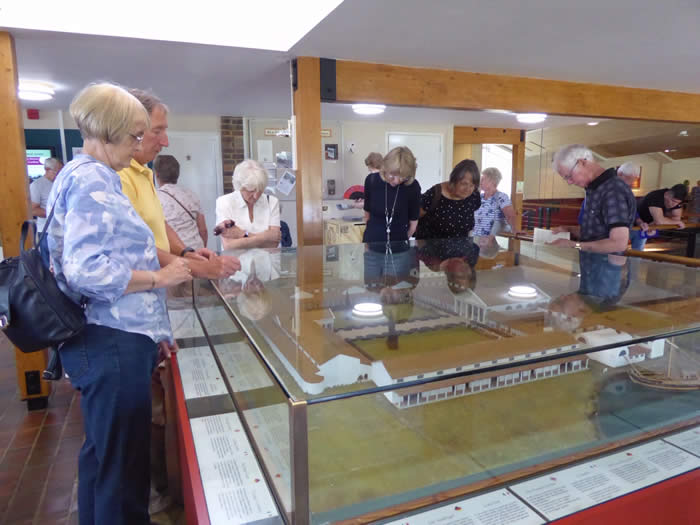

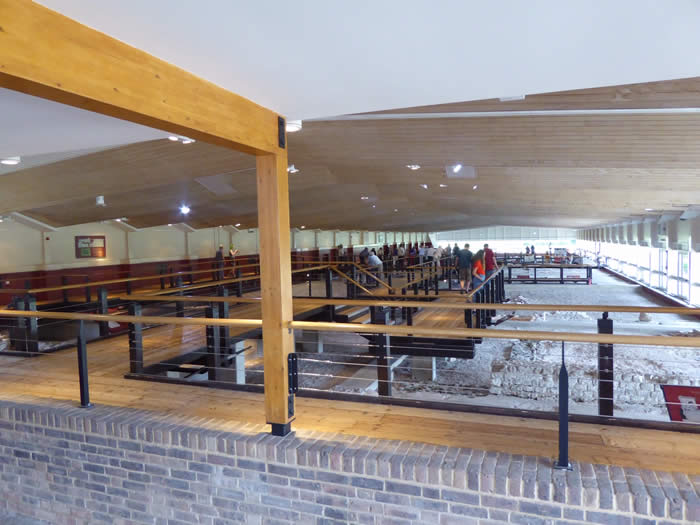




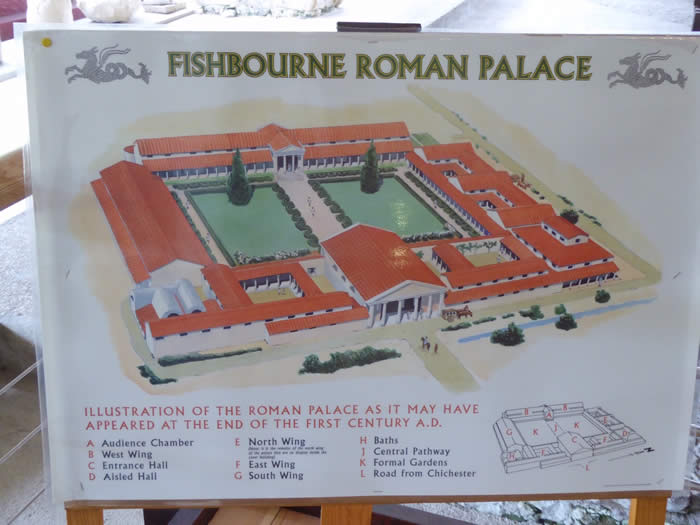
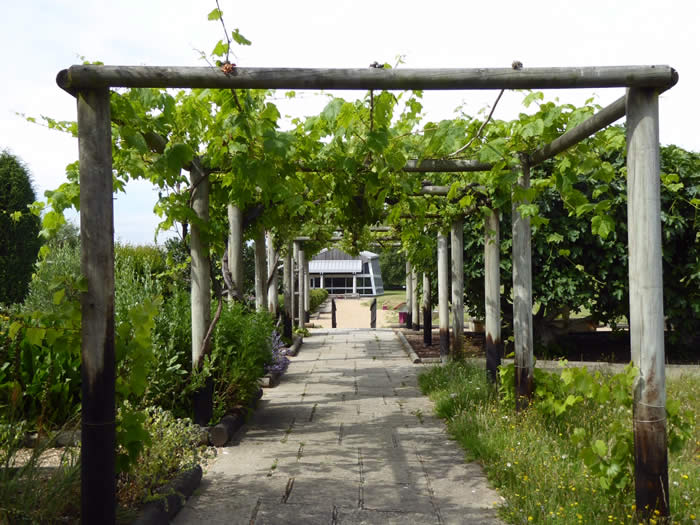
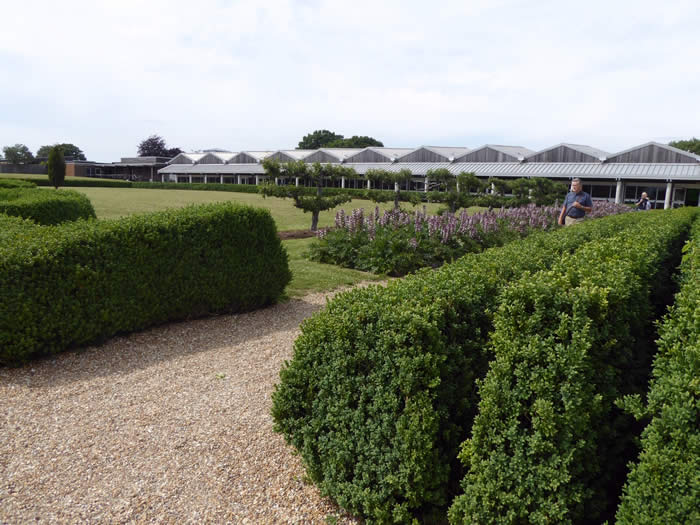

June 12th 2019
The Royal Armouries, Fort Nelson
On an extremely wet Wednesday afternoon Local History Group 1 visited The Royal Armouries at Fort Nelson on the Portsdown Hill Road, completed in the 1860’s. The 19 acres of ramparts, outer fortifications, secret underground tunnels and ammunition bunkers that encompasses this Victorian fort have now been fully restored. Fort Nelson is one of five forts built on Portsdown Hill and were part of the biggest defense projects ever undertaken in Britain.
A Royal Commission was set up by Lord Palmerston, in 1859, to prevent a French land attack to provide the fire power detering an enemy attack on Portsmouth from inland, although it never saw action against the French.
Group member, Stewart England, was our guide. It’s a Polygonal or Palmerston Fort, with a deep ditch protected by three defensive structures called caponiers. We entered on a drawbridge and went into the glass sided “Voice of the Guns’ gallery depicting the star attractions such as Saddam Hussein’s super gun and Second World War antiaircraft guns.
Other areas visited were the garrison’s kitchen, the hospital where the sick and injured were looked after by nurses like Florence Nightingale and the barracks where men rested and lived.
We went down one of the tunnels that allowed the soldiers to reach important areas of the fort’s defences. We paid particular attention to the gunpowder and ammunition stores which were stored in the powder magazine and could understand why felt slippers had to be worn in this area. Walking on the walls of the fort showed that a defence of the fort is because it is below ground level from the North.
The unusual structure of this fort with the many rooms, tunnels and parade grounds gave us much historical knowledge of life for soldiers in the Victorian era, on Portsdown Hill, with expert input from Stewart England. A worthwhile visit.
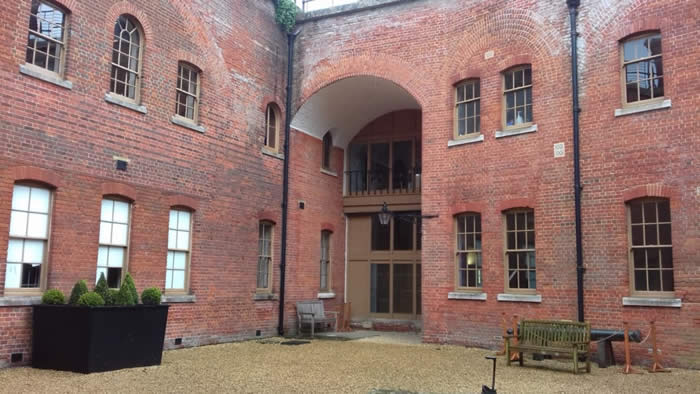

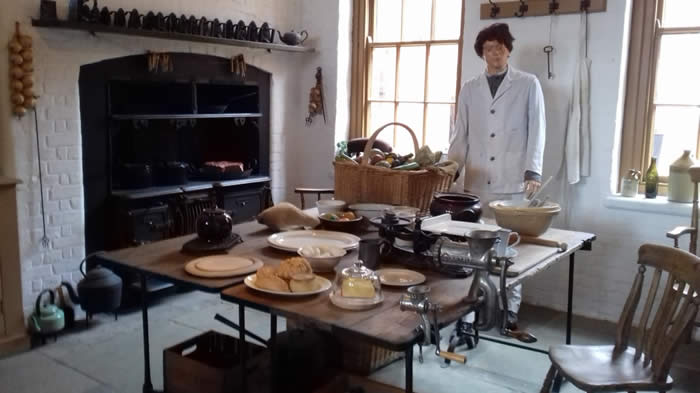
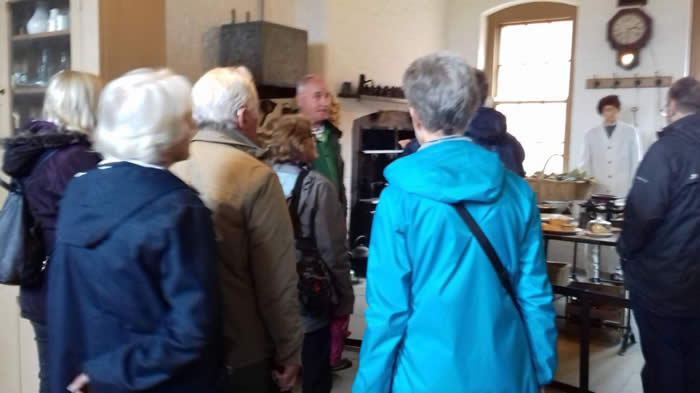
May 8th 2019
Tour of HMS Nelson Wardroom
After a short delay at the security entrance we were ushered in to the impressive Entrance Hall of the Wardroom and, suitably awed, we were taken by our guide, and fellow group member, Richmond Edwards, to the Dining Hall.
Richmond gave us an insight into the function of the Wardroom as well as giving the group information on the murals of scenes from the Royal Navy’s illustrious past. The group were surprised that not all the murals were painted by William Wylie; the majority, including the Trafalgar mural, were painted by Gerald Moira.
Our tour continued along corridors lined with photographs of famous, and not so famous names from naval history; officers who had held posts at the Royal Naval Barracks, or the Royal Dockyard.
We visited the Victoria and Albert Rooms where furniture, originally on the Royal Yacht, ‘Victoria and Albert,’ which was scrapped in 1954, is still in use.
We then climbed the magnificent staircase in the Entrance Hall to view the Dining Hall from the orchestra balcony, having a closer view of the Dining Room’s magnificent ceiling while we were there.
We then repaired to a lounge area for a welcome coffee or tea, and more questions for Richmond, before leaving to attempt to beat the Portsmouth rush-hour traffic.
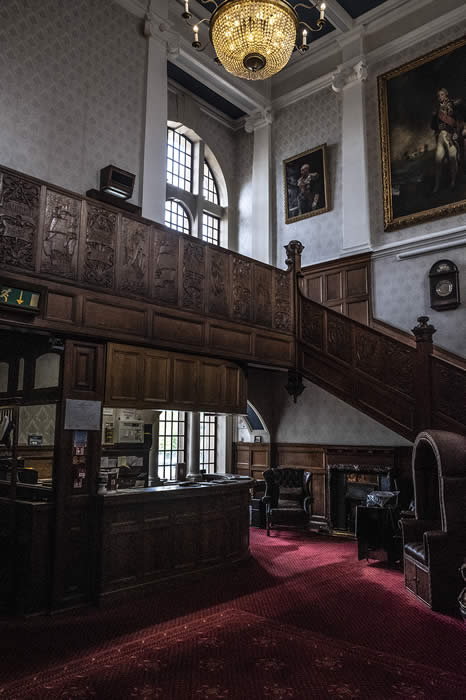
1.The Entrance Hall

2.The Entrance Hall
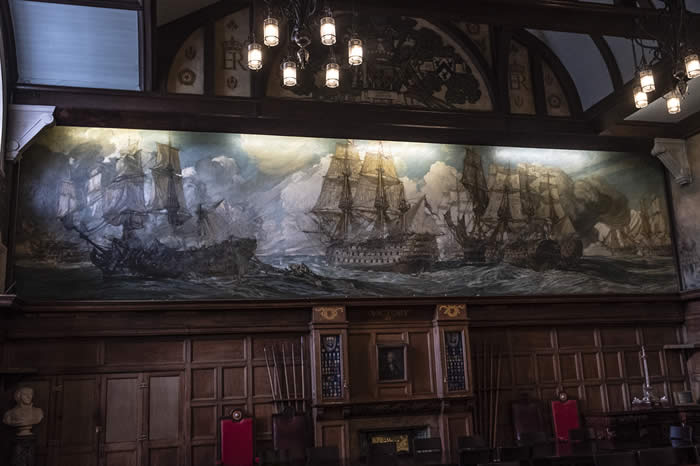
3. Battle of Trafalgar
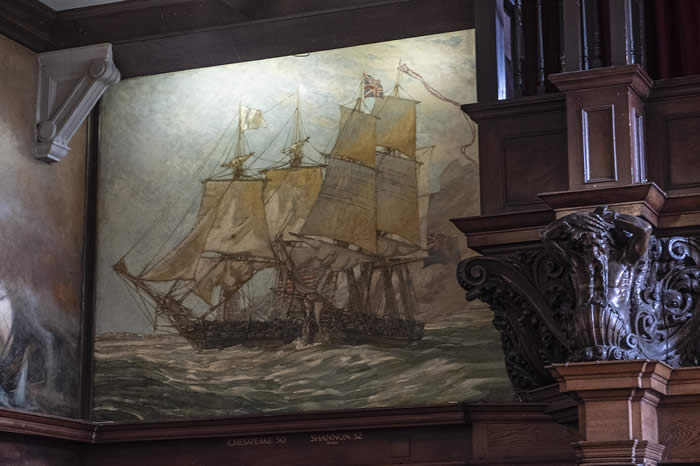
4. HMS Shannon and USS Chesapeake

5. In the Dning Room
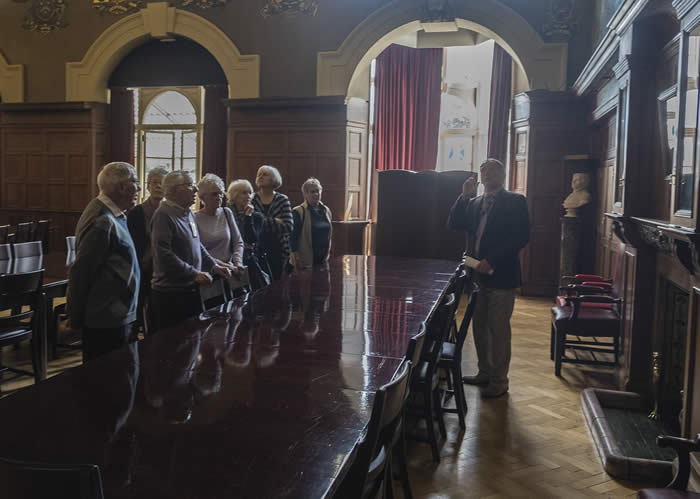
6. The High Table

7. Model of Nelson's Column
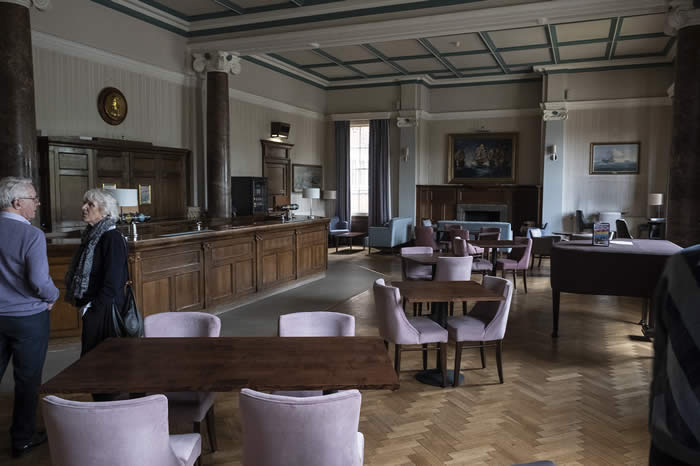
8. The Bar
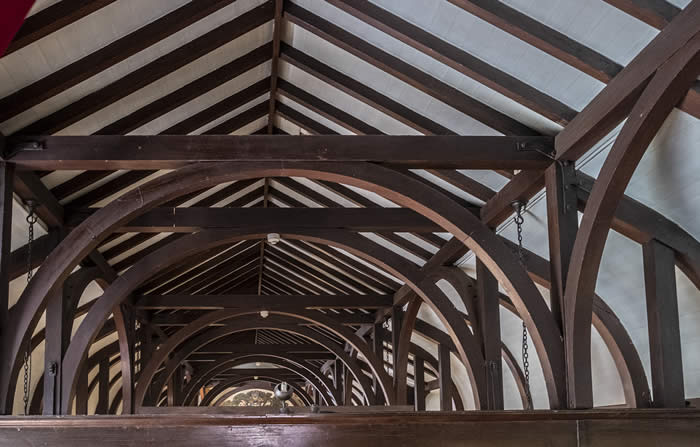
9. The ceiling above the Dining Room.jpg

10. Looking down on the Dining Room
April 10th 2019
Chichester Museum and Walls
We assembled outside the Bell Tower, alongside Chichester Cathedral, for the start of a fascinating walking tour, organised by Chichester City Tours. John Hawkins was our guide for the morning, and he proved to be both knowledgeable and entertaining.
He started by telling us about the history of the Cathedral, and the statue of Bishop Richard outside. John explained about the roof restoration that is currently happening, namely the removal of the copper roof and replacing it with lead.
Romans featured next, and he explained about the archeological importance of the remains now under the Novium Museum in Tower Street.
John pointed out various buildings in West Street, including the Market Cross and the old Debenhams shop, telling us about their original purpose and current situation.
We started to look at the buildings with a new eye, starting to spot the signs of alterations over the decades, for example window sills no longer horizontal, extra floors added in a different architectural style, different coloured or fired bricks.
John took us down tiny streets and alleyways to reveal even more interesting buildings and tiny churches. Most of us had no idea they were there, and this has motivated us to explore further on future visits to the City.
The trip lasted nearly two hours, and could have lasted longer it was so interesting.
We then dispersed to shop, eat or wander further. Some of us visited the Bishops Palace Garden, climbed the steps to walk along part of the boundary wall, and visited the Novium to see the Roman remains and mosaics.
All in all, a great day out.

March 11th 2019
Kings Theatre, Portsmouth
Local History Group 1 spent a very enjoyable morning in the Kings Theatre in Portsmouth.
We were met by Mike Williams, our guide for the morning, in the foyer of the theatre where we could admire the Edwardian grand entrance.
We were taken down a labyrinth of corridors, in order to cover as much of the theatre as possible.
We were shown the various bars, available originally for men only, with their own distinctive decoration, from the modern mural in an area under redecoration, to the luxury of the main bar.
The third bar has been redecorated in the original colours of blue and gold, with stained glass windows.
We sat in a Box, to see for ourselves the limited stage view which is offset by the wonderful view of the audience and the advantage of being seen by members of the audience.
We learnt about the safety curtain, its necessary use, and the legal obligation to show it can be smoothly raised and lowered before every performance.
We learnt that the first few rows of the front stalls were originally allocated for the use of men who were prepared to pay a premium for the seats which gave an excellent view of chorus girls ankles. They also had their own bar, see above, complete with secret door for actors to collect their drinks from the Wings.
View of the Auditorium from the stage.
Mike Williams showed us the different views from the Dress Circle, Upper Circle, and “The Gods”, explaining the original class system and relative pricing of seats.
He then showed us behind the scenes, and the position he occupies when working as Stage Manager.
We saw the area below the stage, too, complete with the water that collects there. All items not in use are stored under there, so it was full of “props”.
We saw and learnt so much more than shown here.
Thank you, Richard, for organising such an interesting trip.
February 13th 2019
Visit to the D-Day Story Museum
We arrived at the Museum on a beautiful day, and spent a very happy couple of hours there. There are over 10,000 items telling the story of Operation Overlord. The Museum recently had a £5 million refurbishment, and is able to preserve, research and acquire objects to share with the public through exhibitions, workshops and other activities. New exhibits include the “pencil” that started the invasion. There is an easy to follow layout of exhibits, and there are verbal accounts from French, German and British people, which somehow makes it more “real”.
We thoroughly enjoyed the Overlord Embroidery, a vivid and very detailed 85metres of skilful work depicting the various aspects of the planning and execution of the invasion. We found the afternoon so interesting that many of us upgraded our tickets, so we can go back again. Many thanks to Alison who organised the visit.
